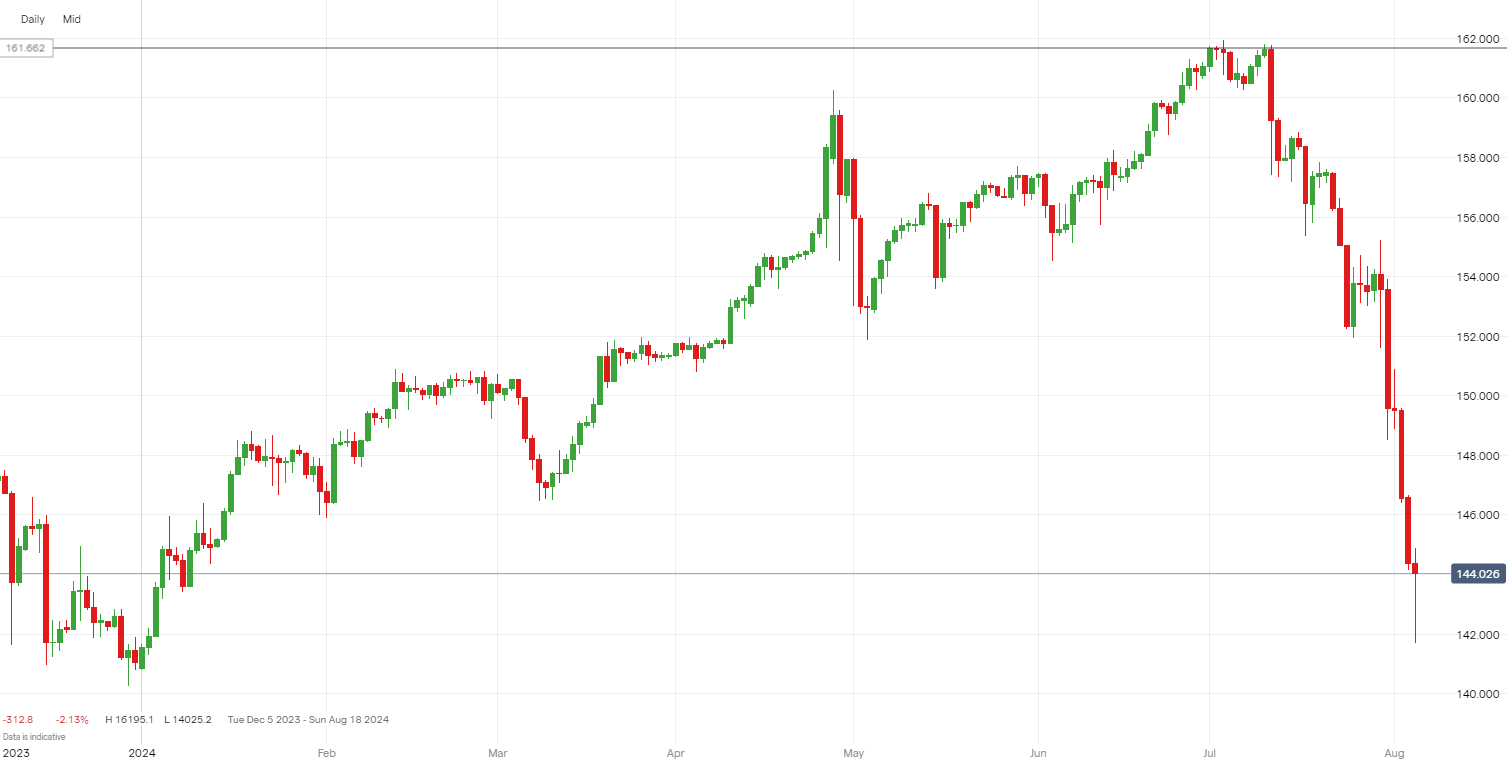Recession fear has traders betting on Emergency Fed rate cut
Explore how rising recession fears have prompted traders to anticipate extreme rate cuts, possibly sooner than September. Learn about the impacts on the stocks, USD/JPY, and 10-year Treasury yields.

Key Points
- US unemployment rate rose to 4.3% in July, the highest since 2021.
- S&P 500 Implied Volatility Index (VIX) surged above 60.00, the highest since the pandemic, causing the S&P 500 to drop more than 2%.
- USD/JPY fell below 145.00 due to the yen's safe-haven appeal amid global recession fears.
- Fed Funds futures indicate a 100% chance of a 50 bps rate cut by the September meeting, with a more than 35% chance of rates falling below 4.0% by 2025.
- 10-year US Treasury yield crashed below 4%, with risk-off sentiment pushing it near 3.5%.
US data sparks global recession fear
US unemployment rose unexpectedly for the third consecutive month, reaching 4.3% in July. This increase has heightened fears of a global recession, as persistent job market weaknesses point to broader economic instability. The latest nonfarm payroll report showed a significant underperformance, with only 114,000 jobs added compared to the expected 175,000. These figures indicate mounting concerns about the US economy's ability to sustain growth.
S&P 500 volatility highest since pandemic
The S&P 500 Implied Volatility Index (VIX) surged above 60.00 for the first time since the pandemic, reflecting increased market uncertainty. This spike in volatility followed the disappointing US employment data, causing heightened fear among investors. The S&P 500 dropped more than 2%, underscoring the market's anxious reaction to potential economic downturns.
USD/JPY crashes under 145.00
Amid fears of a global recession, the Japanese yen has gained significant strength due to increased flight-to-quality demand. USD/JPY dropped well below 145.00 for the first time since January, highlighting the yen's role as a safe-haven asset during times of economic uncertainty. This movement reflects the broader market's shift towards safer investments.

Emergency interest rate cut coming?
Fed Funds futures are now pricing in a 100% chance of an emergency interest rate cut of 50 basis points by their next meeting in September. This anticipated move reflects growing expectations that the Federal Reserve will act swiftly to mitigate the risks of an economic downturn. Given the long stretch before the next scheduled Fed meeting, the speculation around an emergency rate cut before then has added another layer of uncertainty to the financial markets.
US interest rates could fall below 4%
Looking ahead, Fed Funds futures indicate a more than 35% chance that US interest rates could fall below 4.0% by 2025. This forecast suggests a prolonged period of monetary easing as the Federal Reserve navigates ongoing economic challenges. The market is projecting significant rate cuts, with the Fed potentially lowering rates by up to 150 basis points by the end of the year.
10YR Treasury yield crashes below 4.0%
The yield on the 10-year US Treasury has dropped significantly, falling well below 4% for the first time since 2023. This decline is driven by a risk-off sentiment, with investors flocking to the relative safety of government bonds amid growing economic uncertainties. The 10-year yield nearing 3.5% underscores the market's concern about the US economy's future trajectory.
How to trade US dollar
- Open an account to get started, or practice on a demo account
- Choose your forex trading platform
- Open, monitor, and close positions on USD pairs
Trading forex requires an account with a forex provider like tastyfx. Many traders also watch major forex pairs like EUR/USD and USD/JPY for potential opportunities based on economic events such as inflation releases or interest rate decisions. Economic events can produce more volatility for forex pairs, which can mean greater potential profits and losses as risks can increase at these times.
You can help develop your forex trading strategies using resources like tastyfx’s YouTube channel. Our curated playlists can help you stay up to date on current markets and understanding key terms. Once your strategy is developed, you can follow the above steps to opening an account and getting started trading forex.
Your profit or loss is calculated according to your full position size. Leverage will magnify both your profits and losses. It’s important to manage your risks carefully as losses can exceed your deposit. Ensure you understand the risks and benefits associated with trading leveraged products before you start trading with them. Trade using money you’re comfortable losing.
